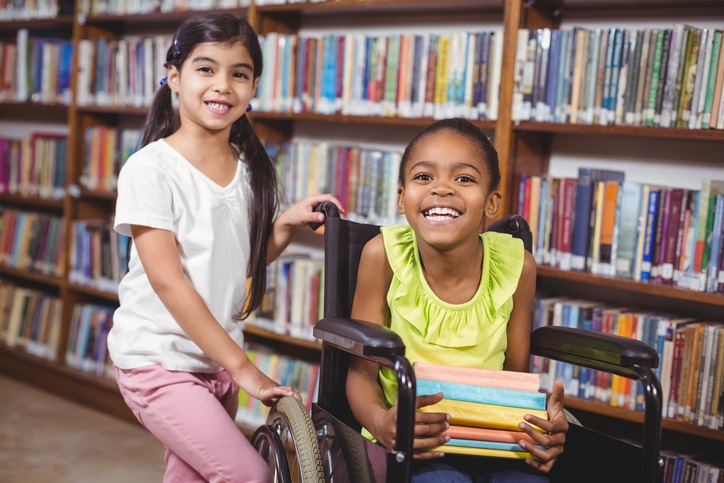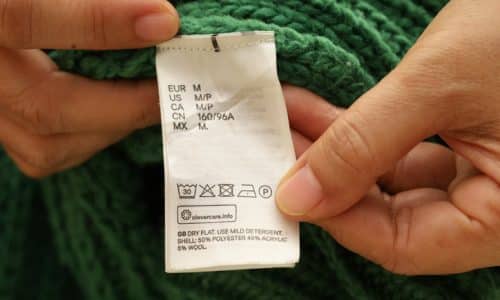When a baby is born, every parent looks at those tiny fingers and sweet little toes and wonders about the future. What will be their child’s interests? Will they be a reader, a lover of numbers, or a dancer and singer – or a wonderful combination of it all? Whatever their child needs, parents are determined to provide absolutely everything possible to reach to enrich their lives.
In years past, parents of special needs children struggled mightily to find schools, therapies and resources to reach this goal. There was no thought of providing kids with disabilities a comparable education to non-disabled kids. There were no special education teachers or training, assessing school buildings with any stairs was nearly impossible for many children, and there were no bathrooms that accommodated wheelchairs or other mobility assists.
In the United States during the 1950s and 60s, children may have attended a school that specialized in their disability, such as The Illinois School For The Blind (now known as The Illinois School For The Visually Impaired). However, many children with special needs didn’t attend school at all; the private expense could be crushing. If a child’s disability couldn’t be managed by family members, the child was placed in long-term care homes to live out their life, sadly known as “warehousing the disabled.”
It was in 1971 that this began to change. In the Pennsylvania Association for Retarded Children (PARC) v. Commonwealth of Pennsylvania court case, the U.S. District Court in Eastern Pennsylvania sided in favor of students with intellectual and learning disabilities who were in state-run institutions. PARC v. Penn called for students with disabilities to be placed in publicly-funded school settings that met their individual educational needs, based on a proper and thorough evaluation. Later that year, in a similar ruling in Washington DC, the District Court made it unlawful for the D.C. Board of Education to deny students classified as “exceptional” – including those with mental and learning disabilities and behavioral issues – access to publicly funded educational opportunities.
Still, in 1972, a study showed that there were about 8 million children with one or more disabilities in the U.S., of which 2.5 million got a substandard education and 1.75 million received no schooling whatsoever. Over half of these children were not receiving the education they deserved.
Finally, in 1975, Congress passed and President Gerald Ford signed the Education for All Handicapped Children Act (EHA). EHA declared that all states accepting money from the federal government were required to provide equal access to education for children with disabilities starting at age three, and to provide them with one free meal per day. States now had the responsibility to ensure compliance under the law within all of their public-school systems. This was subsequently renamed the Individuals with Disabilities Education Act (IDEA).
IDEA makes available a free appropriate public education to children with disabilities throughout the nation, ensuring special education and related services to those children. IDEA governs how states and public agencies provide early intervention, special education, and related services to the more than 7.5 million eligible infants, toddlers, children, and youth with disabilities.
Since the 1975 passage, the law has been amended several times. The amendments included:
- 1976 – Changing the age of eligibility from 3 years old to at birth
- 1986 – Giving parents more rights in determining their child’s Individual Education Plan (IEP)
- 1990 – Adding children on the autism spectrum and those with a traumatic brain injury to IDEA
- 1997 – Congress revamped the legislation, requiring the use of IEPs and changing the name to IDEA
- 2002 and 2004 – Passage of the No Child Left Behind Act, calling for early intervention for students, greater accountability, and improved educational outcomes, while raising the standards for instructors who teach special education classes. It also provided additional funding for schools to expand their special education resources
IDEA is important on so many levels. Education is the primary vehicle that allows the disabled to reach their full potential – just like their able-bodied counterparts – all the way through college and on to a career. IDEA not only guarantees students an equal education, it provides families with viable schooling options and the individualized attention their children need. IDEA helps level the playing field for any individual with a disability and gives special needs children a sense of normalcy as they attend school with neighbors and friends, becoming a real part of the community.
Most beautifully, IDEA doesn’t just benefit children with disabilities. Because able-bodied children are interacting and learning alongside special needs children, greater acceptance as a whole is achieved. When a child knows that their schoolmate with disabilities loves dinosaurs – or The Peacock Detectives – as much as they do, they can see past differences and create lasting, empathetic friendships through shared interests.
At Imagine Pediatrics, we apply IDEA strenuously and fully to ensure your child gets the resources and therapies they need to reach their full potential. When you need help working with your school district for evaluations or services, call us at 312-588-5050 or click here. We are always happy to help.



